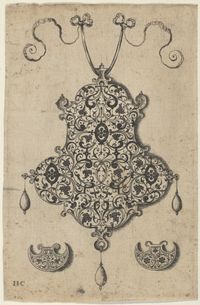
Quivers and hunting horns
Wenceslaus Hollar
An item at Metropolitan Museum of Art
This small etching is part of a series that shows typical seventeenth-century hunting paraphernalia. In one, traditional ox horns and coiled trumpets are both represented in pairs. Horns were used to send messages across vast hunting grounds when large parties of courtiers and their dogs became separated. Different melodies signaled the beginning and end of each stage of the hunt. By the eighteenth century, new horns with larger harmonic ranges were developed. However, ox horns were still used, as they had become synonymous with the pastime.
Drawings and Prints
An exhibit at Metropolitan Museum of Art
The Department’s vast collection of works on paper comprises approximately 21,000 drawings, 1.2 million prints, and 12,000 illustrated books created in Europe and the Americas from about 1400 to the present day. Since its foundation in 1916, the Department has been committed to collecting a wide range of works on paper, which includes both pieces that are incredibly rare and lauded for their aesthetic appeal, as well as material that is more popular, functional, and ephemeral. The broad scope of the department’s collecting encourages questions of connoisseurship as well as those pertaining to function and context, and demonstrates the vital role that prints, drawings, and illustrated books have played throughout history.




